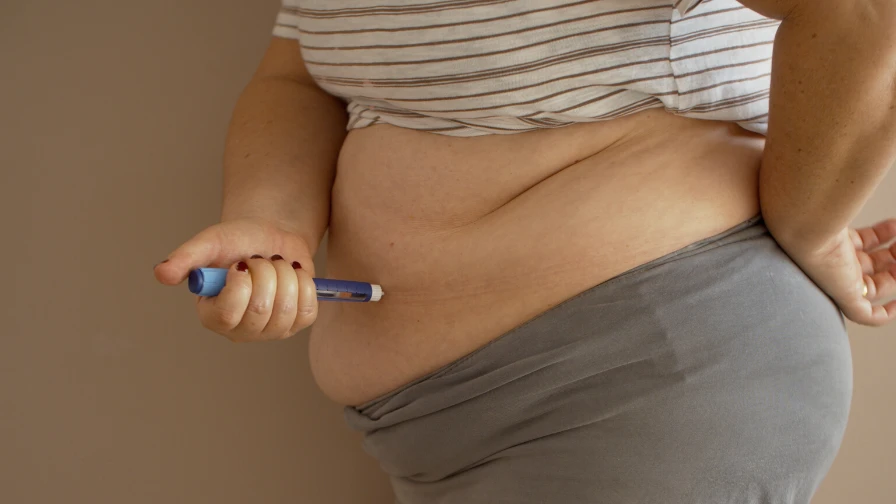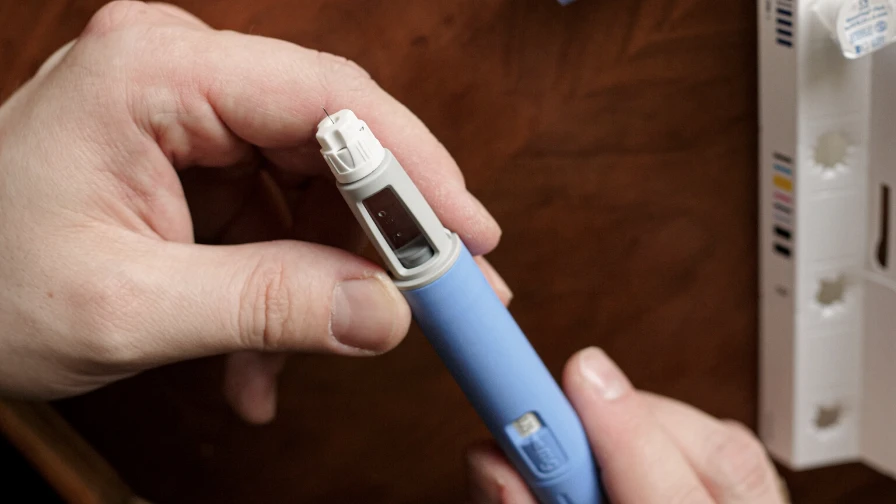New generation weight loss drug Ozempic (semaglutide) was approved by TGA for use in Australia, on August 28, 2019. (In the USA, Ozempic was approved for use in 2017).
This remedy helps overweight people lose weight and regulate their blood glucose levels. It is used together with diet and exercise.
The general principle of using the drug involves an injection you should give once a week (for people with type 2 diabetes). You should make the subcutaneous injection for yourself with an injector pen. The pen is pre-filled with the medication and adjusts to the dosage you need.
During treatment, weekly Ozempic pen doses may vary depending on the schedule prescribed by your doctor.
That’s why the manufacturer produces two types of injector pens:
- for injecting a single dose of 0.25 mg or 0.5 mg;
- for injecting a dose of up to 1 mg.
In this article, we will consider the optimal Ozempic dose for weight loss in Australia.
Ozempic dosage guide
You should make Ozempic injections on the same day of the week, at any time, and before or after meals.
If required, you can change the day of injection without changing the schedule for taking the medication. The main thing is that the time between two doses should be at least 2 days (> 48 hours).
Ozempic clicks dosage chart
Ozempic injector pens are equipped with a selector to choose the most optimal drug dose.
Pen “0.5 mg”. It contains a semaglutide 2 mg solution. The usual starting dose is 0.25 mg per week (you should do 18-19 “clicks” on the selector). If after 2-4 weeks you need to increase the dose to 0.5 mg, you should do 38 clicks.
Pen “1 mg”. It contains a semaglutide 4 mg solution. This injector pen does not have a 0.5 mg dose mark. When you turn up the selector from “0” to 1 mg, 75 “clicks” are required. To select a 0.25 mg dose, you should do 19 “clicks,” and to select a 0.5 mg dose, you should do 37 “clicks.” Then, you should make an injection.
If your doctor recommends a different dose, you should count the number of “clicks” for its selection.

Microdosing Ozempic
Microdosing the drug means that a person undergoing treatment uses lower doses than scheduled. You should do it when side effects manifest that negatively affect your condition, but allow continued treatment.
The most common adverse effects of Ozempic are nausea and diarrhea. These adverse reactions pass in a few days/weeks. During this period, microdosing can be used.
Ozempic dosing can be adjusted on Ozempic injector pens by clicks (notches on the syringe pen) when turning the dosing selector.
Ozempic 2 mg dose
According to the statistics of the Phase 3 Ozempic® SUSTAIN clinical trial program, about 73 % of people with type 2 diabetes treated with Ozempic® 1 mg lowered their blood sugar levels and reached the American Diabetes Association’s goal of < 7 %.
However, more than a quarter of those treated with Ozempic did not cross this threshold.
Ozempic® 2 mg dosage exists to help those who need extra glycemic control.
In August 2019, the Australia Therapeutic Goods Administration (TGA) approved Ozempic® (semaglutide) 2 mg injectable. This decision was based on clinical trial data showing that this dose leads to better A1C test results (it measures average blood sugar levels over the past 3 months) and weight loss.
According to the website nps.org.au, a doctor can prescribe a maximum dose of 1 mg.
Ozempic 2.4 mg dose
The 2.4 mg dose exceeds the currently recommended dose of Ozempic (2 mg).
Ozempic max dose
According to the manufacturer’s instructions, the maximum dose of Ozempic is 2 mg per week.
Ozempic dose escalation
When taking Ozempic, following the doctor’s prescriptions is strictly recommended. Exceeding the recommended dose is unacceptable and can lead to a severe drop in blood sugar levels (hypoglycemia) that will last for a long time. The reason is the drug excretes from the body within seven days. And adverse effects, such as worsening diabetic retinopathy, can last up to five weeks after treatment.

Can you overdose on Ozempic?
The Ozempic injector pen is specially designed to prevent possible overdose. Don’t take more Ozempic than prescribed by your doctor. It can lead to serious adverse effects.
Tell your doctor immediately If you do take an overdose of Ozempic (e.g., a double dose due to forgetfulness). The doctor will have to monitor you carefully and stop possible adverse reactions until they disappear.
Ozempic overdose side effects
An overdose of Ozempic can lead to nausea, vomiting, low blood sugar (hypoglycemia), headache, and other side effects.
If overdosed, semaglutide can slow down digestion and take longer for your body to absorb any medications you are taking.
Ozempic missed dose
If, for any reason, you miss your weekly dose, you should make an injection as soon as possible, within 5 days of the scheduled day.
However, if the break exceeds more than 5 days, consider this dose irretrievably missed and return to the usual Ozempic dose chart. Then take the drug as before, once a week.
How many clicks are in the Ozempic pen
There are two types of Ozempic injector pens. They are quite complex devices. To use them effectively and safely, you need to know how many doses the Ozempic pen has and how many clicks the Ozempic pen has.
Ozempic pre-filled disposable pens are currently available in two variants:
- 2 mg of the active ingredient semaglutide per 1.5 milliliters (ml) of liquid solution. This pen includes 8 doses of 0.25 mg or 4 doses of 0.5 mg;
- Type 2 injector pen is designed for 4 doses of 1 mg. It contains a 4 mg/3 ml liquid solution.
Accordingly, Ozempic clicks dosage is: 0.25 mg, 0.5 mg and 1 mg. However, you can adjust the dose more accurately using “clicks” (which are made by the selector notches on the syringe pen).
So, there are 19 “clicks” between 0 mg and 0.25 mg in the first type of pen. And there are 18 “clicks” between 0.25 mg and 0.5 mg (37 in total). And as many as 74 “clicks” are possible on a 1 mg dosage pen.
Ozempic shortage
A temporary shortage may occur because of the increased demand for the drug in drug stores. Please make sure to purchase Ozempic in advance.
Ozempic half-life
According to the instructions, the half-life of Ozempic is about seven days (168 hours).
More precisely, taking into account the average accuhttps://www.novo-pi.com/ozempic.pdf%23guidemulation rate in individuals who use Ozempic for a long time, the terminal half-life of the drug is estimated at 155.1 hours (~6.5 days).
How do I know when my Ozempic pen is empty
If you use the 0.5 mg dose, your pen should last 4 weeks. If you are making subcutaneous injections of 1 mg, you need 2 pens for this period.
Turn the dosage selector until the flow check symbol appears on the counter to check if the medicine is in the injector. Press and hold the dosing button, and wait until the counter shows 0. Make sure that a drop of the medication appears on the needle tip.
How to administer Ozempic
Ozempic administration rules:
- Remove the cap from the injector pen;
- Ozempic is injected under the skin on the abdomen, thighs, or upper arm. Don’t inject the drug into a muscle or vein;
- Press the dose button to inject until the “0 mg” mark lines up with the pointer;
- When the needle is under the skin and the button is pressed, slowly count to 6. This way, you ensure that you injected the full dose;
- Change the injection site with each injection;
- After use, put the cap back on the injector pen.
Recommended schedule for Ozempic
You can administer Ozempic at any time of the day. It doesn’t matter if you inject Ozempic morning or night, before or after a meal. Doctors don’t determine the best time of day to take Ozempic.
You should make an injection on the same day every week. It is allowed to deviate from this date by two days in one direction or another.
Unless otherwise prescribed by the doctor, the recommended dosage of Ozempic is as follows:
- A 0.25 mg dose should be used once a week during the first four weeks. It is not effective for glycemic control and is intended to allow the body to adjust to the medication;
- Then the dose is increased to 0.5 mg. It is administered for 4 weeks. And then, it is determined whether additional glycemic control is required;
- If the doctor thinks it is required, he increases the dose to 1 mg per week;
- If this dosage is not enough, the maximum recommended dose is prescribed, 2 mg per week.

How to inject Ozempic
To make an injection of Ozempic:
- Insert the needle under the skin on the abdomen, thigh, or upper arm.
- Press the dose button.
- Count up to 6 slowly until the indicator returns to “0”.
- Pull the needle out of the body.
Where to inject Ozempic
What are Ozempic injection sites? The drug is injected under the skin on:
- Abdomen;
- Upper arm;
- Thigh.
Don’t inject Ozempic into a muscle or vein.
Ozempic injection in the thigh
Many ask how to inject Ozempic in the thigh. And where to inject Ozempic in the thigh.
It is advisable to inject in the outer part of the thigh, approximately in its middle. You shouldn’t inject into the inner thigh as there are more blood vessels in that part, and you can damage them during the injection. Pinch at least 1-2 inches of skin with your fingers and inject.
What happens if I inject Ozempic into a muscle
It is not recommended to inject Ozempic into a muscle for two reasons:
- It can be painful;
- In this case, the medicine will be absorbed too fast.
Does Ozempic hurt to inject
According to those who have used injector pens, there is no pain or burning sensation with Ozempic injection compared to insulin shots.
Ozempic drug interactions
We know about 245 drugs interacting with Ozempic (semaglutide) to varying degrees today. They include:
- 2 serious interactions (bexarotene, gatifloxacin);
- 222 moderate interactions;
- 21 minor interactions.
Discuss the list with your doctor.
Ozempic CMI
You can find complete consumer information about the drug on the manufacturer’s website.
Conclusion
Ozempic is a modern drug that treats type 2 diabetes and helps lose weight in combination with diet and exercise.
You should administer the medicine only once a week, on the same day, at any time, and regardless of food intake, which simplifies the treatment process. The effect of the drug lasts for seven days.
The drug is injected under the skin on the thigh (preferably on the outer part), abdomen, or upper arm. Injections are almost painless: no burning sensation characteristic of insulin injections.
Doctors have developed a schedule for Ozempic administration to ensure that those on treatment achieve their goals, usually without adverse effects.










